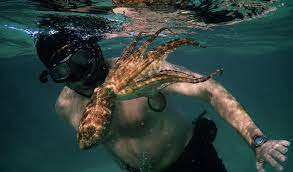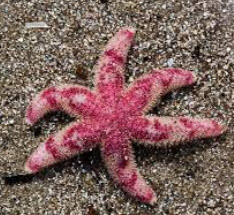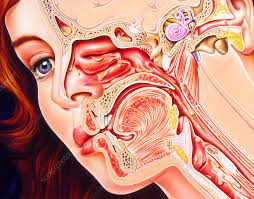Emily Conrad – Founder of Continuum Movement
Continuum generally refers to a continuous sequence or progression without clear boundaries or interruptions. It is often used in various fields such as mathematics, physics, and philosophy to describe a range or spectrum of values that blend into each other smoothly.
For example, in physics, space and time are often considered a continuum, where there are no distinct separations between different points or moments. In mathematics, a continuum can refer to the real number line, which includes all possible values between any two points.
Continuum Movement is a somatic practice that focuses on exploring the inherent movement and fluid nature of the body. It was developed by Emilie Conrad, who sought to tap into the body’s ability to generate its own movement, drawing inspiration from embryology, fluid dynamics, and various healing traditions.
In Continuum Movement, practitioners often engage in breath, sound, and subtle movements to connect with the fluid system of the body. The emphasis is on cultivating a sense of fluidity, suppleness, and connectedness in the body. The practice is often considered a form of somatic education, encouraging individuals to explore and experience their bodies in a holistic way.
Emily Conrad (1938-2014) was an American dancer, choreographer, and movement educator who developed a somatic movement practice known as Continuum. She was born in Akron, Ohio and began her career as a dancer in New York City, working with choreographers including Merce Cunningham and Martha Graham.
In the 1970s, Conrad began to develop Continuum as a way to explore movement and the body beyond traditional dance techniques. Continuum focuses on the fluidity of movement, using breath and sound to connect with the body’s natural rhythms and movements. It draws inspiration from a range of disciplines, including dance, somatics, and philosophy.
Conrad taught Continuum workshops around the world, and her work has influenced many other movement practices and somatic approaches. She wrote several books on Continuum, including “Life on Land” and “Sensing, Feeling, and Action.”
Emily Conrad passed away in 2014, but her legacy and the Continuum practice she developed continue to inspire and influence dancers, movement practitioners, and anyone interested in exploring the body’s potential for movement and expression.
Read Beth Pettengil Riley and Priscilla Stanton Auchincloss “A Moving Inquiry“.
“My Story” Emily Conrad and Renate McNay
Intro to Continuum – Emily Conrad
Readings:
“Life on Land” is a book written by Emily Conrad, the founder of Continuum Movement, which explores the human relationship with the natural world. In the book, Conrad argues that our disconnection from the natural world has led to physical and emotional ailments, and that by reconnecting with the environment through movement and somatic practices, we can find healing and a deeper sense of meaning and purpose in life. Conrad draws on her own experiences and the insights of other somatic pioneers to offer a compelling vision of a more embodied and interconnected way of being in the world.
Life on Land – Culture
Life_Ch21_Octomovement
Life_Ch15_Breath 1
excerpts from WATER By Theodor and Wolfram Schwenk [Peder B. Helland, piano].
and…my thoughts on a day I went for a bike ride in July, 2021.
Sample Mini Dives
Shoulders mini-dive using N and HA sounds (music by Estas Tonne):
Variation of Cari’s Embryonic Mini-Dive using Primordial Breath and M sound:
The Eyes Have It Mini-Dive using Shhh and Zshhh:
I Rib U Not with M and E and O
MmOoHeelToe – my intro
MmOoHeelToe
Pandiculation with Hu and Theta
ENT with H-U-M
ninalolawowo basic (marcella)
marcella describes her dive
and…my thoughts on a day I went for a bike ride in July, 2021
The Blurs – reclaiming your beautiful animal body “growl”
Inside the throat, the airway is essentially a round tube with the vocal cords narrowing the airway, acting as a valve, technically – the glottis. “Vocal cord” is a part of a muscle on the side of the larynx, covered with special tissues that can vibrate at a high speed. It resembles a lip of tissue much more than a cord.
Distortion takes place at the level of the false cord (ventricular folds), level 2. The ‘noise’ is created by vibrations of the false folds. The false folds do not have a flexible and excess mucous membrane as do the true folds, which means that they do not vibrate as fast and delicately as the true folds, and therefore they produce a distorted sound. The distortion takes place above the true folds which means you can add lots of volume to this effect without damaging the voice. Once you have created the ‘noise’ by using the false folds, you can add a mode to the distortion and thereby gain power and metal. The more a sound is distorted, the more ‘noise’ and the less tone there is. Full distortion (100% distortion) is only ‘noise’ and no tone. Distortion is a mixture of ‘noise’ and tone. Distortion is an effect that can contain a range of emotions from aggression to devotion. It has little to do with your speaking voice, some call it pre-vocalization. Janis Joplin is an example of someone who used distortion in her singing.
However, we use distortion in the blurs without the notes. In order not damage vocal chords, I imagine that noise needs to be made at the back of the throat (visualize the back of the mouth). It is not coming from the vocal cords in the front – the speaking part of your voice). There may need to be fluid in the throat at first to help get it started. Its like gargling with sound. Let it be very gentle because if you do it incorrectly it is not nourishing it is irritating. It did allow me to go into the wordless void where I had external awareness but without thought. It is like a little death and kind of peaceful.
It occurs naturally when in C curve on your side to allow the blurs to arise. Gentle and beautiful, not a protective defensive animal “growl” but a nurturing animal sound.
TREE DIVES
Angelika and I are doing tree dive zooms (7/25/2022), We sit at the base of a tree (mine is an apple tree). I had to step away to help my dad. In the waiting, she realized the tree has time. There is no hurry. Waiting is a good thing, she said. “It helps us to manage our expectations.” BASELINE – Our baseline is sitting at the base of the tree, our back aligned with the trunk. We pay attention to our bodies in relation to the roots, trunk, branches, and canopy of the tree. Our eyes wander up to gaze and in this way we bring awareness to the inside of the eyes and outside of the eyes to the leaves. In fact, the tree is the baseline of our lives as we return to it regularly (like a ritual). The dive is an inquiry (which is a state of open mind) on the nature of our relationships with our trees. During this inquiry, Angelika related how the tree is always giving…whether it is shade, protection, or food. The exploration could be about this GIVING quality. We are still discovering the breaths, my favorite is Shhhhh or the Lunar breath. Angelika suggested the Cave Wind breath but for now it is open-ended, just like the movement exploration. We make skin contact as much as we are able to in order to feel our relationship with the tree. It is fun to hang from the branches while being aware of the flow of water in our bodies and the tree – finding the rhythm and the flow, remembering that the tree is in no hurry. When we return to baseline we imagine our sit bones as rooted and feel into the relationship with the tree’s roots. We are curious about roots and branches, and our crown or canopy of the tree. In this dive we are not telling anyone what to do – it is not an instruction as in other forms of somatic movement, rather we offer guidelines. Angelika expressed that earlier this week she was led to water the trees on her property, approximately 200 liters (1/2 hour). They needed nourishment, too (the weather is so dry – one of the trees in the forest near her just fell over from exhaustion or dehydration).






